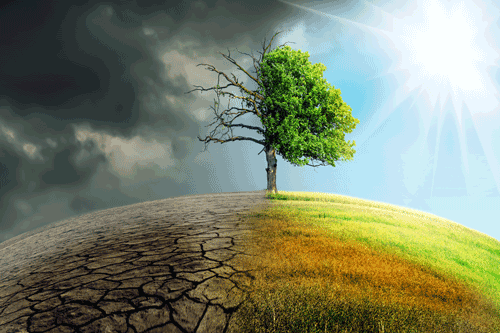Australia's journey to 2030
In recognition of World Environment Day’s 50th anniversary, this year’s host Sweden is adding another international event to the calendar, Stockholm+50. This meeting is dedicated to accelerating delivery on the 2030 Agenda for Sustainable Development (2030 Agenda) and achieve sustainable recovery from the pandemic.
This article will look at what the 2030 Agenda is, Australia’s commitment to the 2030 Agenda including the targets and initiatives for climate action.
The 2030 Agenda
In 2015, 193 Member States at the United Nations Sustainable Development Summit agreed to the 2030 Agenda. A ground-breaking and progressive plan for countries – both individually and collectively – to respond to challenges being faced now and into the future.
The 2030 Agenda includes 17 Sustainable Development Goals (SDGs) to help achieve a sustainable future for the planet, communities, and economies.
Australia’s commitment to the 2030 Agenda
Australia was an active participant in the international discussions for the 2030 Agenda, believing the SDGs reflect the country’s values such as a clean and safe environment, opportunity for all, being treated fairly and equally and diverse and supportive communities.
In response to the SDGs Australia put together the Report on the Implementation of the Sustainable Development Goals to determine what was already being achieved by organisations, local governments, academia, communities and individuals towards the SDGs and what needed to be prioritized to advance the 2030 Agenda.

National and state work towards climate change
Australia has a commitment to all 17 SDGs and their global targets, however for this article we’re focusing on the efforts at a national and state level towards Goal 13 Climate Action.
At a national level
Under the guidance of the Climate Change Authority and the Climate Change Authority Act 2011, Australia is addressing climate change and its impacts by:
- Taking direct action to reduce emissions through new technologies, international partnerships and emissions reduction incentives such as the Emissions Reduction Fund.
- Meeting its obligations under the Paris Agreement and working toward their emission reduction targets such as reducing emissions by 26 to 28% below 2005 levels by 2030 and committing to net zero emissions by 2050.
- Supporting state and local governments, organisations and communities anticipate, manage and adapt to the impacts of climate change with the National Climate Resilience and Adaption Strategy 2021-2025.
- Invest in climate science research such as the Earth Systems and Climate Change Hub to improve our understanding of past, current and future climates.
At state and territory level
All states and territories are working towards achieving net-zero emissions by between 2025-2050 depending on the state or territory. Implementing their own plans and initiatives, each state and territory aim to achieve this target by, among other things:
- Understanding the changing climate, reducing the exposure to climate risks, capturing sustainable opportunities and building resilient communities.
- Improving public transport networks and electric vehicle infrastructure and incentivising the uptake of electric vehicles.
- Adopting organic waste collection in households to divert organic waste from landfill.
- Supporting businesses most likely to be affected by a transition to a net-zero economy such as manufacturing plants, factories and farms.
- Providing consumers with reliable and affordable electricity whilst also supporting the growth of renewable electricity generation and storage.
- Phasing out natural gas connections and switching to cleaner alternatives such as hydrogen and biogas.
- Supporting the expansion of carbon farming with projects such as herd management to reduce emissions from cattle and carbon sequestration opportunities in soils, vegetation, forestry and livestock management.
- Governments leading by example with commitments such as establishing plans to reduce emissions in public health facilities, Government schools, ensuing newly built or leased Government buildings are all-electric and climate-wise and new leased Government fleet vehicles are zero-emission vehicles.

A glimpse into some of the state and territories’ initiatives
- The Australian Capital Territory is the first jurisdiction outside Europe to transition to 100% renewable energy.
- The Western Australian Government is rolling out METRONET – their most ambitious investment in public transport that will support urban design, promote sustainable behaviour and reduce car dependency.
- The Victorian Government is investing $515 million to deliver the biggest transformation of the waste and recycling system in the state’s history, including a $380 million investment to deliver Recycling Victoria.
- New South Wales has a $450 million Emissions Intensity Reduction Program designed to help business move their plant, equipment and processes to low emission alternatives.
- With a vision of being a world-class renewable hydrogen supplier, the South Australian Government has co-invested in the Australian Hydrogen Centre to drive research and development of hydrogen generation, distribution and use.
- The Northern Territory is taking advantage of its natural assets to innovate and engineer more renewable energy products and drive a low carbon economy.

References
- ACT Government Publication: Climate Change Strategy 2019-25
- Australian Government Publication: National Climate Resilience and Adaption Strategy 2021-2025
- Climate Change Authority Act 2011
- DAWE Webpage: 2030 Agenda for Sustainable Development and the Sustainable Development Goals
- Department of Foreign Affairs and Trade Publication: Report on the Implementation of the Sustainable Development Goals
- DISER Webpage: Emissions Reduction Fund
- DISER Webpage: International Climate Change Commitments
- NSW Government Publication: Climate Change Policy Framework
- NSW Government Publication: Net Zero Plan Stage 1: 2020-2030
- Northern Territory Government Publication: Climate Change Response: Towards 2050
- Queensland Government Publication: Climate Adaption Strategy
- South Australian Government Publication: Climate Change Action Plan 2021-2025
- Sustainable Development Goals Website
- UN Environment Programme Publication: Sweden to Host World Environment Day 2022
- United Nations Climate Change Webpage: Paris Agreement
- Victoria Government Publication: Climate Change Strategy
- Western Australia Government Publication: Climate Policy